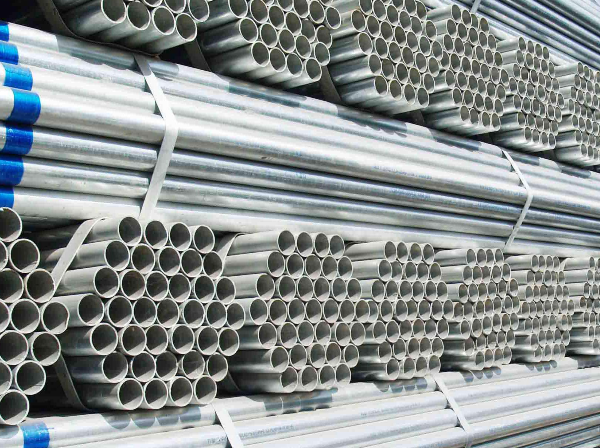What is galvanized seamless steel pipe?
Galvanized seamless steel pipe (GI seamless pipe) refers to galvanizing the surface of seamless steel pipe. After the API seamless pipe is pickled, the surface is coated with a layer of zinc, so it is more corrosion-resistant, not easy to rust, and can prolong the service life.
Classification of galvanized seamless steel pipes:
Galvanized seamless steel pipes are divided into hot-dip galvanized seamless steel pipes and cold-dip galvanized seamless steel pipes.
Hot-dip
galvanized seamless steel pipe is to make the molten metal react with the iron substrate to produce an alloy layer, so that the substrate and the coating are combined. Hot-dip galvanizing is to pickle the steel pipe first. In order to remove the iron oxide on the surface of the steel pipe, after pickling, it is cleaned by ammonium chloride or zinc chloride aqueous solution or a mixed aqueous solution of ammonium chloride and zinc chloride, and then sent to hot-dip coating tank. Hot-dip galvanizing has the advantages of uniform coating, strong adhesion and long service life.
Cold-dip galvanized seamless steel pipe is electric galvanizing, the amount of galvanizing is very small, only 10-50g/m2, and its corrosion resistance is much worse than that of hot-dip galvanized pipe. The galvanized pipe manufacturer of the track, in order to ensure the quality, the large purchase of JDG threading pipe does not use electro-galvanizing (cold galvanizing). Only small companies with small equipment and outdated equipment use electro-galvanized steel, of course, their prices are relatively cheaper. In the future, it is forbidden to use cold-galvanized pipes as water and gas pipes.

Advantages of hot-dip galvanized pipe:
1. Low processing cost: the cost of hot-dip galvanizing and anti-rust is lower than that of other paint coatings.
2. Durable and durable: hot-dip galvanized steel pipe has the characteristics of glossy surface, uniform zinc layer, no missing plating, no dripping, strong adhesion and strong corrosion resistance. In the suburbs, the standard hot-dip galvanized anti-rust thickness can be maintained for more than 50 years without repairing. In urban areas or offshore areas, the standard hot-dip galvanized anti-rust layer can be maintained for 20 years without repairing.
3. Good reliability: the metallurgical bond between the galvanized layer and the steel material becomes a part of the steel surface, so the durability of the galvanized layer is more reliable.
4. The toughness of the coating is strong: the galvanized layer forms a special metallurgical structure, which can withstand mechanical damage during transportation and use.
5. Comprehensive protection: every part of the plated parts can be coated with zinc, even in the depressions, sharp corners and hidden places can be fully protected.
6. Save time and effort: the galvanizing process is faster than other coating construction methods, and it can avoid the time required for painting on the construction site after installation.
Difference between hot galvanizing and cold galvanizing:
Hot-dip galvanized seamless pipe: The steel pipe substrate and the molten plating solution undergo complex physical and chemical reactions to form a corrosion-resistant zinc-iron alloy layer with a tight structure. The alloy layer is integrated with the pure zinc layer and the steel pipe substrate. Therefore, it has strong corrosion resistance.
Cold galvanized seamless pipe: The zinc layer is an electroplated layer, and the zinc layer is independently layered with the steel pipe substrate. The zinc layer is relatively thin, and the zinc layer is easily attached to the steel pipe substrate and is easy to fall off. Therefore, its corrosion resistance is poor. In newly built houses, it is forbidden to use cold-galvanized steel pipes as water supply pipes.
Go here to learn more about " Production Process of Galvanized Pipe"


